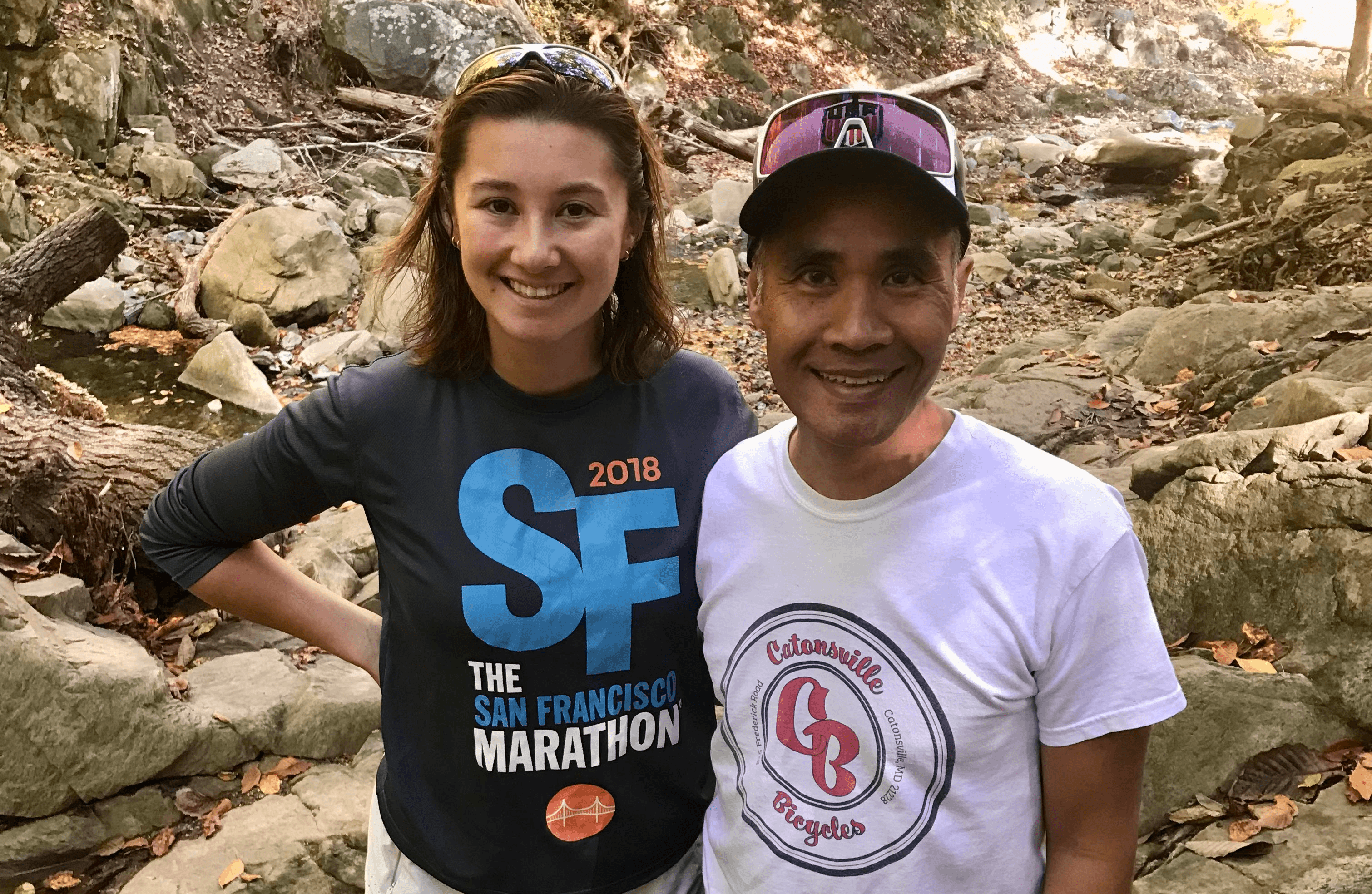Maybe it’s genetics, maybe not, but Hannah and her dad, Oscar, both share interests in science and athletics.
Hannah is an avid runner. Her dad has always been active, whether it’s playing soccer or distance cycling. A patent lawyer by profession, Oscar is also captivated by science and holds a master’s degree in applied molecular biology.
For her part, Hannah, a genetic counselor at Lemonaid Health, Inc., part of the 23andMe family, can’t remember a time when she wasn’t interested in genetic science. It happened early after her identical twin younger brothers were born.
“I actually used 23andMe back in 2015,” Hannah said. “But I’ve been interested in genetics my whole life. I’m captivated by the intersection of genetics and health.”
That sort of sums up her dad’s outlook, too. Along with their shared interest, Hannah and her dad learned from using 23andMe that they shared something else: an increased genetic likelihood of developing type 2 diabetes.
Like Father, Like Daughter
We wanted to share Hannah and Oscar’s story for Father’s Day this year. Hannah gifted her dad a 23andMe kit that revealed health insights that benefited both of them.
“You have these two generations of individuals,” Hannah said. “Myself, and my father, and we all have this in common. Knowing that helps to highlight how important it is for us to each have a healthy lifestyle and remain active.”
An Unexpected Risk Addressed
Hannah and her dad are fit, lean, healthy, and active. You might not expect that they had this predisposition toward type 2 diabetes. But like most health conditions, type 2 diabetes is influenced by several factors, including genetics, diet, activity levels, and whether one can maintain a healthy weight.
Sometimes, a person’s ancestry and family history is also essential in understanding a predisposition for certain conditions. Rates of type 2 diabetes are higher among people with African, Indigenous American, Asian, Latino, and Pacific Islander ancestry. Oscar is Filipino.
One key indicator for those at risk for type 2 diabetes is a blood test called hemoglobin A1C (HbA1C). It measures a person’s average blood sugar (glucose) level.
“I make sure that every year I get a blood test, and one of the first things I do is check my A1C number because it is high,” Oscar said. “It’s something I watch along with my diet.”
The Power of Prevention
Because Hannah’s A1C numbers have been up and down, her doctor has recommended getting tests every six months.
This has been important for her health. However, Hannah also said it perfectly illustrates what she does almost every day as a genetic counselor—reminding people that their health is influenced by the interplay of their genetics, lifestyle, and environment. Understanding that and your family health history can go a long way to understanding what you should be aware of and actions you could take toward prevention.
Like her dad, it motivates her to make healthier choices and avoid processed foods and too much sugar. Seeing that she has a genetic predisposition is also motivating.
“I feel like that’s the real power of these results in a preventative sense,” she said. “The genetic result gives clarity, puts it front and center, and motivates me. It’s very powerful.”
Learn More
Explore how genetics impacts your health and the traits you share with your family. Find out all that 23andMe has to offer here.




